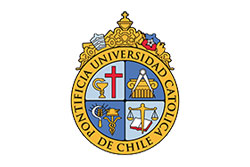Source: The Boston Globe – by Nicole Dungca GLOBE STAFF (June 20, 2015)

Imagine a bus that sails past cars stalled in gridlock during rush hour.
A group of mass transit specialists and community activists convened by the Barr Foundation want that to be a reality for Greater Boston.
According to a recent study from the group, Boston should push for a bus system with more exclusive bus lanes separated from mainstream traffic, prepaid fare collection, and enclosed stations.
That type of system has been termed bus rapid transit, BRT for short, in the transportation world. In Boston, some aspects of bus rapid transit are already in place on the MBTA’s Silver Line, which operates in an exclusive lane for part of its route.
Jackie Douglas, executive director of Livable Streets Alliance and a member of the group, said she believes the Boston area is ideal for the expansion of such a system.
“We could move so many more people efficiently and effectively throughout the region,” she said. “Boston is prime because we have the demand and we have the density to support it.”
The elements of bus rapid transit also include allowing buses to have shorter waiting times at intersections to cut commute times, and elevated platforms so riders can board quickly. The report argues that the city should be pushing for the “gold standard” of bus rapid transit. That would include a control station that monitors buses and ensures they come at well-spaced intervals, and enclosed stops that shelter customers.
“For a number of high-demand corridors, BRT could provide fast, comfortable, reliable service at lower cost than alternatives,” the report said. “Investment in BRT elsewhere in the United States has shown that on average, BRT can be seven times more affordable than light rail, per mile.”
The system is prominent in dozens of cities, such as Cleveland, Los Angeles, Mexico City, and Rio de Janeiro, according to the report. Nearly 100 corridors with bus rapid transit operate in 62 cities worldwide.
In the study, the group identified five local corridors that would benefit the most from the “gold standard” system: Dudley Square to downtown; Dudley to Mattapan; Readville to Forest Hills; Harvard to Dudley; and Sullivan to Ruggles.
The group chose the locations by determining how effective the system could be in reducing congestion on the T, serving underrepresented neighborhoods, meeting additional demand by giving a more direct travel option, and encouraging additional housing and businesses.
Bus rapid transit could cut commute times significantly in those areas, the report said. Getting from Dudley to downtown would be 45 percent faster if the city invests in a good bus rapid transit system, the report said. Rather than spending about 23 minutes trying to get from Dudley to downtown, a commuter could get there in 12½.
The group thinks Boston should become a leader in bus rapid transit. Though a few cities in the United States have installed some level of bus rapid transit in recent years, none have a system that has been certified by experts as the “gold standard.” That distinction has gone to only a few cities, such as Belo Horizonte, Brazil, and Lima, Peru.
Implementing such a system would bring challenges for the city, said Richard A. Dimino, executive director of A Better City, a nonprofit that coordinates businesses and other institutions on infrastructure projects.
“When you look at bus rapid transit, you have to face tough questions about parking, about traffic lanes, and how we have a scarcity of both,” said Dimino, who was part of the study group. “The challenge is seeing how we can balance the needs of parking and traditional vehicular congestion against the opportunity of moving larger numbers of people in a more efficient and effective way.”
But Dimino said it’s worth the conversation. And Douglas said such changes to the bus system are taking time to gain prominence in the United States because the conversation just hasn’t been started yet. Transit advocates just have to reframe the way the bus is perceived, she said.
“I always say, we’re trying to make the bus sexy,” she said.
Orange Line upgrades mean night shuttles this summer
The good news? The T is finally upgrading the Orange Line’s tracks to avoid another disastrous winter.
The bad news? You’re going to have to ride a shuttle bus at night while they work on it.
On Monday night, riders will need to take shuttle buses instead of the subway on the Orange Line between the Oak Grove and Wellington stations from 8:45 p.m. to the end of regular service hours. The shuttle buses will drive passengers to the Wellington, Malden Center, and Oak Grove stations.
The T will replace rail service with buses on select nights throughout the summer: June 22 through June 24, June 25, June 28 through June 30, July 1 and July 2, July 5 though July 9, and July 13 through July 16.
The upgrades are part of an $83.7 million plan announced by Governor Charlie Baker that would upgrade the equipment and tracks battered by the heavy snows that hit Boston last winter.
That plan includes a $12.7 million project to replace the third rail and switch heaters on outdoor sections of the Red and Orange line tracks. Those lines had to be shut down this winter because workers couldn’t remove snow and ice from the tracks quickly enough.












